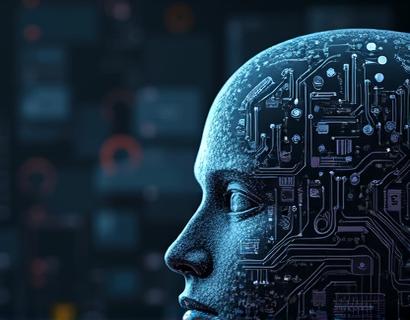UX Design Trends 2025: Mastering Digital Transformation for Enhanced User Experience
In the rapidly evolving landscape of digital products and services, UX design plays a pivotal role in driving success and enhancing user satisfaction. As we step into 2025, the field of UX design continues to evolve, influenced by technological advancements, changing user behaviors, and emerging design trends. This comprehensive guide aims to equip UX designers and enthusiasts with the latest insights, expert strategies, and practical tips to master digital transformation and elevate their UX design practice.
Understanding the Current UX Design Landscape
The UX design landscape in 2025 is characterized by a focus on inclusivity, personalization, and seamless integration of technology into daily life. With the increasing use of AI and machine learning, designers are leveraging these technologies to create more intuitive and adaptive user experiences. The pandemic has accelerated the shift towards remote work and digital interactions, making user experience more critical than ever.
Accessibility remains a top priority, with designers striving to create products that are usable by everyone, regardless of ability. This includes adhering to WCAG guidelines and incorporating features like screen reader support, keyboard navigation, and high-contrast modes. The emphasis on inclusivity extends beyond physical abilities to cultural and linguistic diversity, ensuring that digital products resonate with a global audience.
Emerging Trends in UX Design
One of the most significant trends in UX design for 2025 is the integration of AI and machine learning. These technologies enable designers to create personalized experiences that adapt to individual user preferences and behaviors. For instance, AI-driven recommendation systems can suggest products or content based on a user's past interactions, enhancing engagement and satisfaction.
Another trend is the rise of voice user interfaces (VUIs). With the proliferation of smart speakers and voice assistants, designers are focusing on crafting natural and intuitive voice interactions. This involves understanding conversational patterns, optimizing for context-aware responses, and ensuring that voice commands are accurate and responsive.
Micro-interactions are also gaining traction as a way to enhance user engagement and provide subtle feedback. These small, delightful moments can significantly impact the overall user experience. For example, a well-designed loading animation or a subtle hover effect can make a product feel more polished and responsive.
Designing for Mobile and Beyond
With the majority of users accessing digital products via mobile devices, responsive design remains a cornerstone of UX design. However, the focus is shifting towards designing for specific device contexts and user intents. This means creating experiences that are not just responsive but also contextually relevant, taking into account factors like location, time of day, and device capabilities.
Progressive Web Apps (PWAs) are another area of interest, offering a native app-like experience within the web browser. PWAs combine the best of web and mobile apps, providing fast load times, offline capabilities, and push notifications. For designers, this presents an opportunity to create seamless and consistent experiences across different platforms.
Enhancing User Research and Testing
Effective user research and testing are fundamental to creating user-centered designs. In 2025, designers are leveraging advanced research methods and tools to gain deeper insights into user needs and behaviors. Remote usability testing, for instance, allows designers to observe users in their natural environments, providing more authentic and actionable feedback.
Synthetic testing and AI-powered analytics tools are also becoming more prevalent. These tools can simulate user interactions and provide real-time insights into user behavior, helping designers identify pain points and areas for improvement. The integration of these tools into the design process enables a more iterative and data-driven approach to UX design.
Sustainability and Ethical Design
As awareness of environmental and social issues grows, sustainability and ethical design are becoming integral to UX design. Designers are considering the environmental impact of digital products, from energy-efficient coding practices to minimizing digital waste. Ethical design involves being transparent about data usage, respecting user privacy, and avoiding manipulative design tactics.
Incorporating sustainability into the design process also means creating products that are accessible and usable for as long as possible, reducing the need for frequent updates and replacements. Ethical considerations extend to the content and messaging within digital products, ensuring that they promote positive social values and inclusivity.
Future-Proofing UX Design
To stay ahead in the ever-changing digital landscape, UX designers must embrace a forward-thinking approach. This involves staying informed about emerging technologies and trends, such as augmented reality (AR) and virtual reality (VR), and exploring how these can be integrated into digital products to create immersive and engaging experiences.
Design systems and component libraries are also crucial for maintaining consistency and efficiency in the design process. By establishing a robust design system, teams can ensure that their products are cohesive, scalable, and easier to maintain. This approach not only speeds up development but also enhances the overall user experience by providing a consistent and familiar interface.
Practical Tips for Implementing Trends in Your UX Design Practice
To effectively incorporate these trends into your UX design practice, consider the following practical tips:
- Embrace user-centered design principles and prioritize empathy in your research and testing methods.
- Experiment with AI and machine learning tools to create personalized and adaptive experiences, but ensure that these technologies enhance rather than overwhelm the user.
- Focus on micro-interactions to add delightful touches that make your product stand out without detracting from usability.
- Optimize your designs for specific device contexts, considering factors like location and user intent to create contextually relevant experiences.
- Utilize synthetic testing and AI-powered analytics to gain deeper insights into user behavior and identify areas for improvement.
- Incorporate sustainability and ethical design principles into your workflow, from energy-efficient coding to transparent data practices.
- Stay updated with the latest design systems and component libraries to maintain consistency and efficiency in your designs.
By integrating these strategies and staying attuned to the latest trends, UX designers can drive digital transformation and deliver exceptional user experiences that meet the evolving needs of users in 2025 and beyond.











































